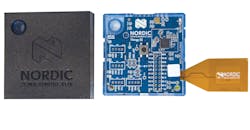Considering how fast the wireless field is changing, it’s difficult to stay on top of the latest news, trends, technologies, and products. Most of the coverage is now dominated by the Internet of Things (IoT) and 5G cellular. And yet, there’s lots more going on. Here are a few interesting items you may have missed.
White Spaces
For years now we have been hearing about the television white space (TVWS) spectrum and its potential. Yet not much has happened with it. TVWS refers to the unused 6 MHz TV channels in the 54 to 598 MHz range that the FCC allocated to broadband and other wireless services. Some TVWS standards have been developed—such as Weightless and IEEE 802.11f, or White Fi—but few adoptions or products have appeared. However, because of the low frequency spectrum characteristics, TVWS is great for long-range applications like consumer broadband connections in rural areas where there is a dearth of high-speed internet connections.
That may be changing, however, as Microsoft is now pledging support for some TVWS action to close the so-called “digital divide”—the gap between the haves and have-nots of high-speed internet access. It will be interesting to see what Microsoft does in addition to the forthcoming FCC broadband efforts and any possible Trump administration infrastructure investment.
Ultrawideband (UWB)
Another technology we haven’t heard much about lately is UWB. This unique wireless technology has been around for more than a decade and has found several niches. The two main types of UWB are impulse and multiband. The impulse method encodes data into very narrow Gaussian-shaped pulses that are usually phase modulated. The signal is spread over a bandwidth of at least 500 MHz at a very low power level. The FCC permits such operation in the 3.1 to 10.6 GHz range.
The multiband method uses 128 subcarrier OFDM in a 528 MHz band. Most data rates are in the 100 to 480 Mb/s range. Fred Battaglia of Starix Technology contacted me recently, indicating that his company is an ongoing supplier of multiband UWB products to consumers, the medical field, and the military. Check out the Starix products here.
Anyway, UWB is alive and well. And it may be an undiscovered solution for your IoT application. For more details see my recent blog.
The Bluetooth Thingy
Just recently I had the chance to review a new Bluetooth product called the Thingy. It is made by Nordic Semiconductor of Oslo, Norway. The company’s Thingy 52 is a simplified development platform for building Bluetooth-based IoT applications. (see photo). It is based upon the Nordic nRF52832 SoC that incorporates a 32-bit ARM Cortex M4F processor and a multi-protocol 2.4 GHz radio that supports Bluetooth 5, Bluetooth Low Energy (BLE), ANT, and a proprietary protocol.
The Thingy 52 is housed in a 6 × 6 cm package with its own rechargeable lithium-ion battery. It is loaded with environmental sensors, pushbuttons, LEDs, and a speaker. You use the Thingy by downloading an app on your smartphone. This is a great tool to quickly build and test a BLE prototype or demo unit. You can get a Thingy 52 from distributors like DigiKey and Mouser for $39. Take a look at the details.
The iPhone 10th Anniversary
Ten years ago, on June 30th, Apple introduced the first iPhone. It was an instant hit, and has remained a favorite ever since. More than a billion units have been sold worldwide, and a new 10th anniversary model (the iPhone 8) is expected in September or October.
I still have my original 2007 iPhone. It worked great, and that product essentially started our smartphone infatuation and addiction. Speculation says that the iPhone 8 will have an OLED screen, a better camera, and wireless charging capability. A faster processor and upgraded iOS are probably a given. Some unique packaging design features are also expected. The iPhone 8 will probably be a bestseller, though its price may be higher because of an IP battle with Qualcomm.
How Low Can You Go?
With an ongoing spectrum shortage, the push is on to the higher GHz range frequencies. The millimeter-wave bands are already seeing increased activity with WLANs and radar, as well as the many of the 5G cellular systems that will use the 28 and 39 GHz bands. But not everyone is headed in that direction. The FCC recently announced the forthcoming opening of two new frequency bands for amateur radio operators. These are the 472 to 479 kHz (630 meters) and 135.7 to 137.8 kHz (2,200 meters). Yes, that is kHz.
With such limited bandwidth CW and digital modes will dominate. Power level is restricted to about 5 watts, but the real limitation will be antennas. A 479 kHz half-wave dipole needs to be 977 ft. long. At 137 kHz a dipole is about two-thirds of a mile. I suspect practical antennas will be truncated verticals with loading coils and loops. Final approval has not been given to operate yet, but is expected in the near future.


